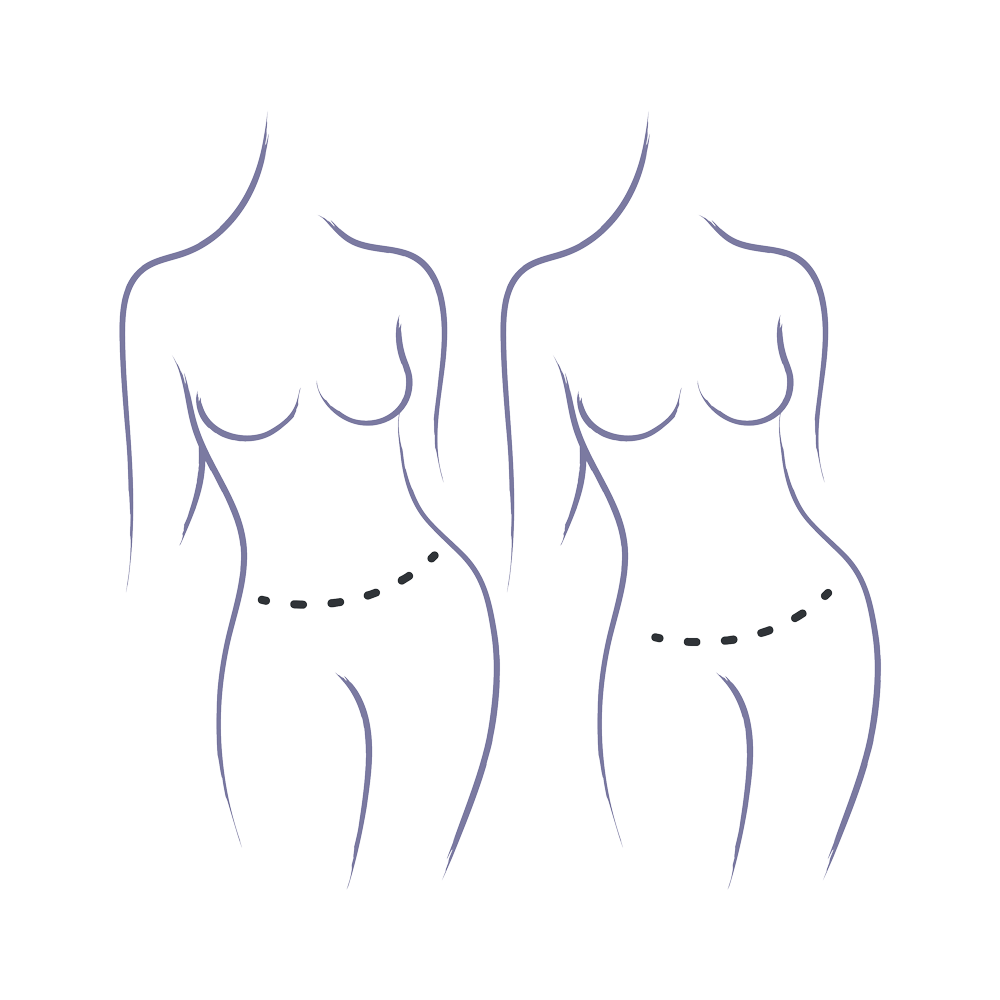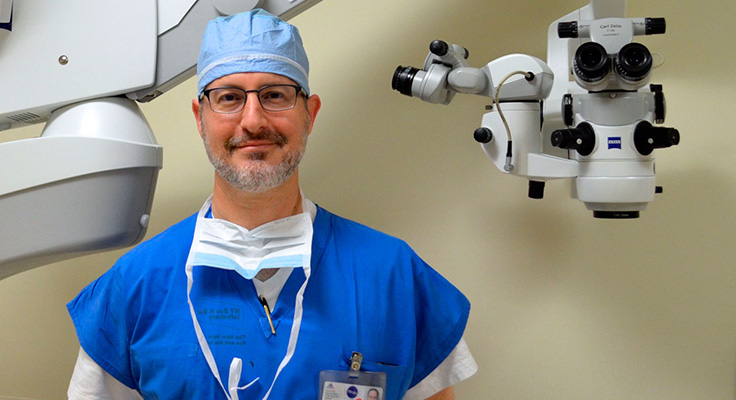Breast Reconstruction
“STACKED” DIEP Flap Breast Reconstruction Procedure
This page explains Stacked DIEP flap breast reconstruction, a surgical technique that uses a double layer of tissue from the lower abdomen to rebuild the breast after mastectomy. Detailed illustrations and video narration help you understand this advanced procedure.
About STACKED COMBINATION Flap Breast Reconstruction

“STACKED” DIEP Flap

“STACKED” COMBINATION Flap
All women are candidates for autologous breast reconstruction. Even very thin women can use their own body tissue to reconstruct both breasts. When a patient has scant extra body fat, it is sometimes appropriate to use tissue from more than one donor site. These procedures are called “stacked” or “combination” flap reconstructions.
STACKED DIEP PROCEDURE:
Stacked DIEP flap involves using a double layer of tissue from the lower abdomen (DIEP flap) to reconstruct the breast mound. Both the upper and lower layers of abdominal skin and fat are harvested and transferred to the chest to create a more substantial breast reconstruction. The blood supply to the tissue is maintained through multiple deep inferior epigastric perforator vessels.
STACKED COMBINATION PROCEDURE:
When a bilateral breast reconstruction is done for a thin woman, four flaps may be recommended. This procedure uses tissue from multiple donor sites to create the breast mound. This would usually include one half of the abdomen (hemi-abdomen) PLUS another flap such as a PAP flap for each breast.
STACKED DIEP Flap Breast Reconstruction Procedure
Illustrations & Video
STACKED COMBINATION Procedure Video
Narrated by Dr. Levine
In this breast reconstruction procedure video, Dr. Levine explains the STACKED DIEP / FOUR Flap Procedure.
The abdomen is the most common donor site in perforator flap breast reconstruction. Extra skin and fat is removed to reconstruct one or both breasts resulting in a flattened abdomen similar to that of a tummy tuck.
Common Questions about the STACKED DIEP / COMBINATION
Flap Breast Reconstruction Procedure
STACKED DIEP:
Most women with breast cancer have enough skin and fat in the stomach area (lower abdomen) to reconstruct one or two breasts. Even for patients who have had prior abdominal surgery, almost everyone is a candidate for this operation. The idea is to use extra skin and fat in the lower abdominal area, take this tissue along with the blood vessel that supplies it, and transplant it to the chest to make new, natural breast.
Usually, when a woman donates tissue from the abdomen, this has the same effect on the abdomen as a tummy tuck.
STACKED COMBINATION:
Insufficient donor tissue from a single flap: In cases where there is limited donor tissue available from a single flap technique (such as DIEP, SGAP, TUG, etc.), a combination flap approach may be considered.
Both STACKED DIEP (Deep Inferior Epigastric Perforator) flap breast reconstruction and DIEP flap breast reconstruction are surgical procedures used for breast reconstruction after a mastectomy. They are both microsurgical techniques that involve transferring tissue from the lower abdomen to rebuild the breast.
The main difference between STACKED DIEP flap and DIEP flap lies in the approach to harvesting the tissue and the subsequent reconstruction:
- DIEP Flap Breast Reconstruction: In DIEP flap reconstruction, the surgeon uses only the skin and fat from the lower abdomen (the area between the navel and pubic bone) to create the new breast mound. The procedure preserves the underlying abdominal muscles. Blood vessels called deep inferior epigastric perforators are carefully dissected and then connected to blood vessels in the chest to ensure adequate blood supply to the transferred tissue.
- STACKED DIEP Flap Breast Reconstruction: STACKED DIEP flap takes the concept of DIEP flap a step further. Instead of utilizing only the skin and fat from the lower abdomen, the STACKED DIEP technique involves using a double layer of tissue. In this procedure, both the upper and lower layers of the abdominal skin and fat are harvested and transferred to the chest to create a more substantial breast mound. The surgeon carefully dissects multiple perforator vessels to maintain blood supply to both layers of tissue.
The choice between DIEP flap and STACKED DIEP flap breast reconstruction depends on various factors such as the patient’s body shape, amount of available tissue, and the desired outcome. STACKED DIEP flap reconstruction may be considered in cases where there is a need for additional volume or projection in the reconstructed breast.
A woman may need a STACKED DIEP (Deep Inferior Epigastric Perforator) flap breast reconstruction procedure instead of a regular DIEP flap for several reasons:
- Insufficient donor tissue: In some cases, a woman may have limited donor tissue available in the lower abdomen, particularly if she has undergone previous abdominal surgeries or has a naturally thin abdominal wall. Using a STACKED DIEP flap allows the surgeon to utilize both the upper and lower layers of abdominal tissue, providing additional volume and allowing for a more substantial breast reconstruction.
- Desire for increased breast volume: STACKED DIEP flap reconstruction is particularly beneficial for women who desire a larger breast size or greater projection. By using the double-layered tissue from the abdomen, the surgeon can create a more voluminous breast mound compared to a regular DIEP flap.
- Previous failed breast reconstruction: In cases where a woman has previously undergone breast reconstruction using other methods and experienced unsatisfactory results, a STACKED DIEP flap can be considered as an alternative approach to improve the outcome. The additional tissue and volume provided by the stacked technique can help correct any aesthetic or functional issues from previous procedures.
- Body shape and aesthetic goals: Every woman’s body shape and desired outcome are unique. Some women may have specific aesthetic goals or anatomical considerations that make a STACKED DIEP flap reconstruction a better option for achieving the desired breast shape, symmetry, or overall body contour.
Gradually, blood vessels and nerves grow into the transferred tissue. Scars fade, and the end result is a breast reconstruction that looks and feels and behaves exactly like a normal breast. The only difference is that there is no breast tissue inside it, and therefore no risk of breast cancer in the transferred tissue.
The photographs in this section are of actual patients of Dr. Joshua Levine. They have undergone various types of autologous breast reconstruction (perforator free flaps), i.e. DIEP/SIEA, PAP, GAP, delayed, immediate, with nipple-sparing mastectomy, etc. Keep in mind that each patient is unique and results may vary. To view more before & after photos, please contact our office to schedule a consultation.
Natural tissue breast reconstruction has several benefits compared to other methods of breast reconstruction. Here are a few key benefits:
- It uses a woman’s own natural tissue, which means that it is less likely to be rejected by the body.
- It doesn’t require the use of implants, which can cause complications such as scarring, infection, and hardening of the breast tissue.
- It doesn’t sacrifice any muscle, which means that women can retain their natural shape and function.
- It can be performed at the same time as a mastectomy, which can save time and reduce the overall number of surgeries that a woman needs to undergo.
- It can help women feel more comfortable and confident in their own bodies, which can improve their quality of life.
Overall, natural tissue breast reconstruction can provide women with a more natural and safe option for restoring their breasts after a mastectomy.
“Dr. Levine is an outstanding Doctor. He is a wonderful human being and a highly skilled surgeon. My results are nothing short of miraculous. There is no one like Doctor Levine. He is an artist and a true professional.”

Dr. Joshua L. Levine, MD, FACS
World Leading Authority in Perforator Flap Breast Reconstruction
Based in New York, New Jersey, and Connecticut
Meet Dr. Joshua L. Levine,
World-Renowned in the Art and Science of Natural Tissue Breast Reconstruction
Dr. Joshua Levine is a world-renowned perforator flap breast reconstruction surgeon. Meaning, all of his breast reconstruction procedures, are muscle-sparing, using only your own natural tissue to restore your breast(s).
With his advanced techniques, such as stacked combination flaps, or utilizing the delay phenomenon in staged-immediate reconstruction, all women, no matter how thin and no matter what body type, are candidates for natural tissue, muscle-sparing, implant-free breast reconstruction.
As Seen On: US News & World Report, diepflap.com


